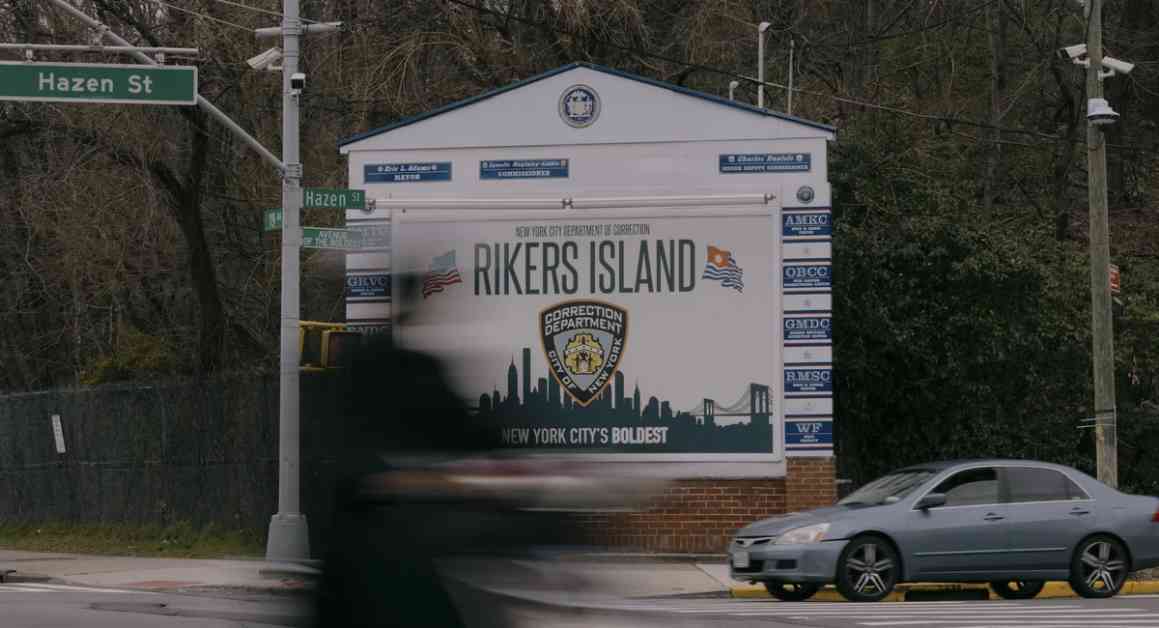Last week, Mayor Eric Adams made a startling announcement that he plans to issue an executive order welcoming U.S. Immigration and Custom Enforcement (ICE) agents back to Rikers Island. This bold move has ignited a heated debate, raising questions about the mayor’s authority to reinstate these officers who were removed from the jail complex over a decade ago. The declaration, which followed a meeting with President Donald Trump’s “border czar” Tom Homan, has sparked both praise and criticism from various stakeholders.
The mayor’s decision has been met with skepticism and concern, particularly from immigrant advocates like Elora Mukherjee, the director of the Immigrants’ Rights Clinic at Columbia Law School. Mukherjee emphatically stated, “The mayor cannot with the stroke of a pen change our city laws by himself.” On the other hand, City Councilmembers Robert Holden and Vickie Paladino have voiced their support for Adams, commending his initiative and labeling it as a positive step forward.
Despite the polarizing opinions on Adams’ plan, one thing is clear – the mayor’s authority to implement this change is far from guaranteed. Policy experts and practitioners closely associated with the matter have highlighted the need for more clarity and specificity in the upcoming executive order. Only then will the full extent of the plan be revealed.
Challenges in Reinstating ICE Agents
Adams’ proposal to allow ICE agents to operate on Rikers Island faces a significant hurdle – existing city law. A law enacted in 2014 prohibits ICE presence on the island, forming part of a broader set of sanctuary city measures aimed at limiting city resources and personnel involvement in immigration enforcement. However, a loophole in the law enables a mayor to authorize immigration authorities to maintain an office on Rikers Island for purposes unrelated to civil immigration law enforcement.
The ambiguity surrounding the legality of Adams’ intended executive order has left legal experts and advocates divided. Louis Cholden-Brown, a former attorney in the City Council during the passage of the 2014 sanctuary law, emphasized the importance of the order’s verbiage and the extent of the mayor’s authority. Neal D. Frishberg, a private practice attorney representing immigrants at risk of deportation, expressed skepticism about the lawful nature of the proposed executive order, questioning the necessity of ICE presence on Rikers for non-immigration law enforcement purposes.
The lack of specific details in Adams’ statement has left many wondering about the practical implications and restrictions that would govern ICE officers’ activities on Rikers Island.
The Historical Context and Future Implications
The decision to remove ICE officers from Rikers Island in 2014 stemmed from concerns about the federal government’s efforts to involve local jurisdictions in immigration enforcement. The move was part of a broader commitment to signal New York’s stance against deportations and unauthorized immigration. The passage of the 2014 law aimed to protect individuals accused of crimes from unwarranted deportation proceedings and ensure due process for all.
Recent federal legislation signed by Trump targeting unauthorized immigrants accused of theft and violent crimes has further complicated the landscape. The Laken Riley Act mandates the federal detention of individuals awaiting trial on such charges, raising concerns about due process and the potential for increased deportations.
As New York braces for the potential reinstatement of ICE agents on Rikers Island, the city faces a pivotal moment in its immigration enforcement history. The implications of this decision extend beyond the confines of the island, touching on broader debates about immigration policy, law enforcement, and due process.
In the coming days, the issuance of Adams’ executive order will shed light on the finer details of this controversial plan. While some await legal challenges and potential court battles, others hope for a swift resolution to the uncertainty surrounding ICE’s role on Rikers Island. The future of this issue remains uncertain, with implications that could reverberate far beyond the confines of New York City.












